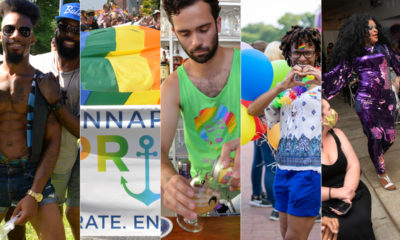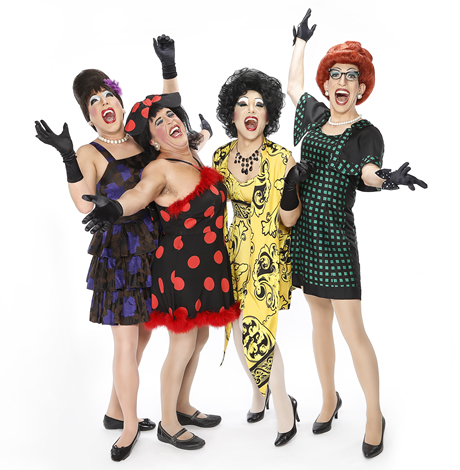Arts & Entertainment
The Kinsey Sicks’ COVID-era creations
‘From a Distance’ parody thrills fans
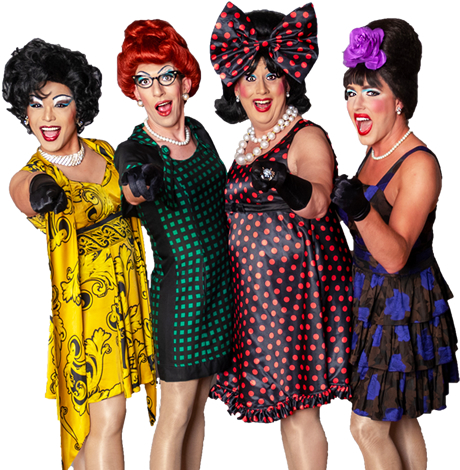
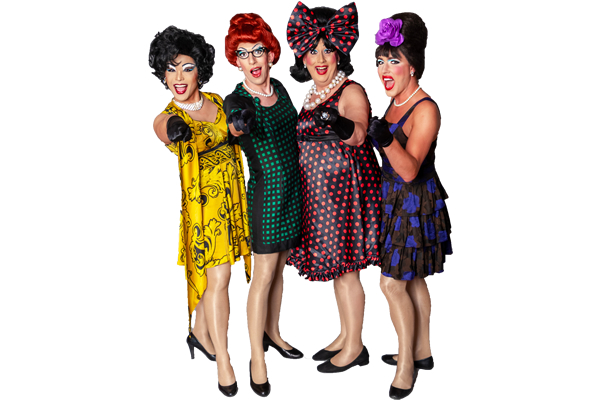
Sheltering in place but not standing still, veteran Dragapella Beautyshop Quartet-cum-satirical/political group The Kinsey Sicks (kinseysicks.com)—who would have been touring right now, were it not for shuttered venues—have amped up their online presence, with timely new music and a determination to get back on the boards just as soon as the all-clear is called. (The national tour of their “Electile Dysfunction” musical extravaganza has been postponed until further notice, although in the spirit of “subject to change,” it’s presently noted on their website.)
But if anything good can come out of this end-times scenario, count among that short list drag queens who’ve employed everything from gallows humor to heartfelt advice to score-keeping tales of woe to get them out of bed in the morning, in the hopes that one day soon, they’ll be bed-hopping again.
Chief among those able alley cats, The Kinsey Sicks: Trixie (Jeff Manabat), Winnie (Nathan Marken), Angel (J.B. McLendon), and Trampolina (Spencer Brown).
The group, whose “Social Distance” parody of The Divine Miss M’s “From a Distance” dropped at the tail end of March, finds our quarantined quartet biding their time indoors by playing Jenga-for-one, eating peanut butter straight from the jar, binging on Disney+, waiting for that stimulus check, and, sans a man, spooning toilet paper.
Early May’s “Don’t-cha Touch-a, Touch-a-Touch Me!” found our girls one month into self-isolation—feeling the strain of no human touch, and making due with suggestive cameo appearances by bananas and carrots. Still, their collective dry spell finds some solace in non-stop digs at Trump.
“I’ll trade off satisfaction for strong leadership and action,” goes the tune, based on a certain ditty from “The Rocky Horror Picture Show.” And if you don’t get the reference, you’d better hand in your Gay Club Membership Card.
But it was sunny skies ahead, when the bill came due for The Kinsey Sicks to answer our burning inquiries.
BLADE: How did “Social Distance” come about? How was it written/shot, and what sort of feedback has it gotten from fans?
SPENCER/TRAMPOLINA: Anyone familiar with The Kinsey Sicks already knows that the group’s origins were inspired by attending a Bette Midler concert in the ’90s. When her classic hit “From a Distance” got into my head, I immediately sat down and hammered out the lyrics. Then Jeff, one of our other members, whipped up the arrangement and sent the music file for all of us to learn and record. Within a short amount of time, those individual recordings were sent back to him for mixing, and the combined four-part harmony track was then sent out for us to sing along to for reference. Over the next few days, we each got in drag and shot our videos, which were then sent back to me for a few more days of editing.
Finally, after a little more than a week since I was inspired to write “Social Distance,” we released the finished video to our fans all over social media. Their feedback has been nothing but positive. Though we are devastated to cancel our spring tour (something we’ve never done in our 26 years of this group existing), this video is a gift for our fans, and lets them know we’re still here fighting the good fight.
BLADE: Are there other group projects in the works?
SPENCER/TRAMPOLINA: This first video (“Social Distance”) was an experiment. All four members of the group live in different states across the country (Kansas, Maryland, California, and Illinois, presently). Being able to write a parody, get it arranged, learn it, then record it (individually!), and edit/mix everything in a short amount of time is something we’ve never attempted, but having done that and seeing the reaction of fans both old and new, we’re now inspired to create more.
BLADE: What impact did the realities of the HIV/AIDS epidemic have on the group’s worldview, and what parallels, if any, do you draw to the current COVID-19 crisis?
JEFF/TRIXIE: By the time The Kinsey Sicks was formed in San Francisco in the early ’90s, almost a quarter-million people, most of them gay and bi men, died from the epidemic, and San Francisco was one of the epicenters. Although thousands were dead and dying, mainstream American society still had a negative view of the community, and the American government had barely made any response to help. For several years, the LGBT community and its allies were almost entirely alone. And yet there was still a need to find some measure of joy amidst all the pain and tragedy, perhaps a creative yet politically charged way to respond to the incredible injustice from not just politicians, but our fellow Americans. Amid this atmosphere, a group of close friends was inspired to create The Kinsey Sicks.
To get a fuller picture of the beginnings of the group, and to trace its origins to the current political atmosphere, it’s worth watching a remarkable monologue by Emeritus member Ben Schatz (“Rachel”), a Harvard-trained civil rights lawyer, former director of the National Gay and Lesbian Medical Association, and one-time presidential adviser on HIV issues, who created the first national AIDS legal project and authored Clinton’s HIV policy during the 1992 presidential campaign. The video can be found on YouTube.
Our worldview is still heavily influenced by this genesis. It’s embedded in our DNA. For decades, The Kinsey Sicks has produced works commenting on that nexus of politics, culture, and sexuality through drag and a cappella, and we will continue to be influenced by, comment on, and respond to the world around us that way.
There can be parallels made between the HIV/AIDS epidemic and the current crisis, such as the extreme measures by the GOP to use tragedy for their own political gain, and to pit communities against each other whilst hoarding more power. However, the swift response of the government on all levels—from federal to state to local—and the mobilization of the majority of Americans to support those in crisis is much different. Back then, it was several years before the federal government even acknowledged the existence of AIDS/HIV, let alone begin the search for treatment.
Today, the Coronavirus response has been a matter of weeks or months, and the search for a vaccine has become a national priority. However, for both times, higher powers have acted in ways that merit a critical response from artists—and for us, as it was then, it’s a response of the musical variety.
BLADE: Has this forced time away from public performance impacted the group’s output, and approach to using online/social media as an expression of your artistry?
SPENCER/TRAMPOLINA: Absolutely! When we’re not on stage, the group is always working behind the scenes on how we can effectively produce new material, and the traction that this new video [Social Distance”] has gotten really inspires us to keep going.
BLADE: Has the group had any notable virtual interactions with fans during this period of social distancing?
SPENCER/TRAMPOLINA: The Kinsey Sicks is no stranger to social distancing. Many, many, of our audiences have been avoiding us for years. So we keep our virtual interactions with fans to a minimum for their safety.
BLADE: This one is for every member of the group: The all-clear is called and we’re allowed to gather in public again. What are the first things you’re going to do?
NATHAN/WINNIE: As soon as we can go out in public, I look forward to getting back on the campaign trail with The Kinsey Sicks, sampling all the delectable vegetarian fare from coast-to-coast.
JEFF/TRIXIE: I can’t wait to go back to modern life’s basic public pleasures: dinner-and-a-movie dates with my favorite boyfriends, shopping sprees with my favorite sugar daddies, and multiple anonymous hookups via my favorite apps.
J.B./ANGEL: I’m planning a three-way with Mitch McConnell and social scientist Peter Navarro. It might not happen, but I’m trusting my intuition on this one.
SPENCER/TRAMPOLINA: Vote.

The fifth annual Fredericksburg Pride march and festival was held on Saturday, June 28. A march through the streets of downtown Fredericksburg, Va. was followed by a festival at Riverfront Park.
(Washington Blade photos by Michael Key)
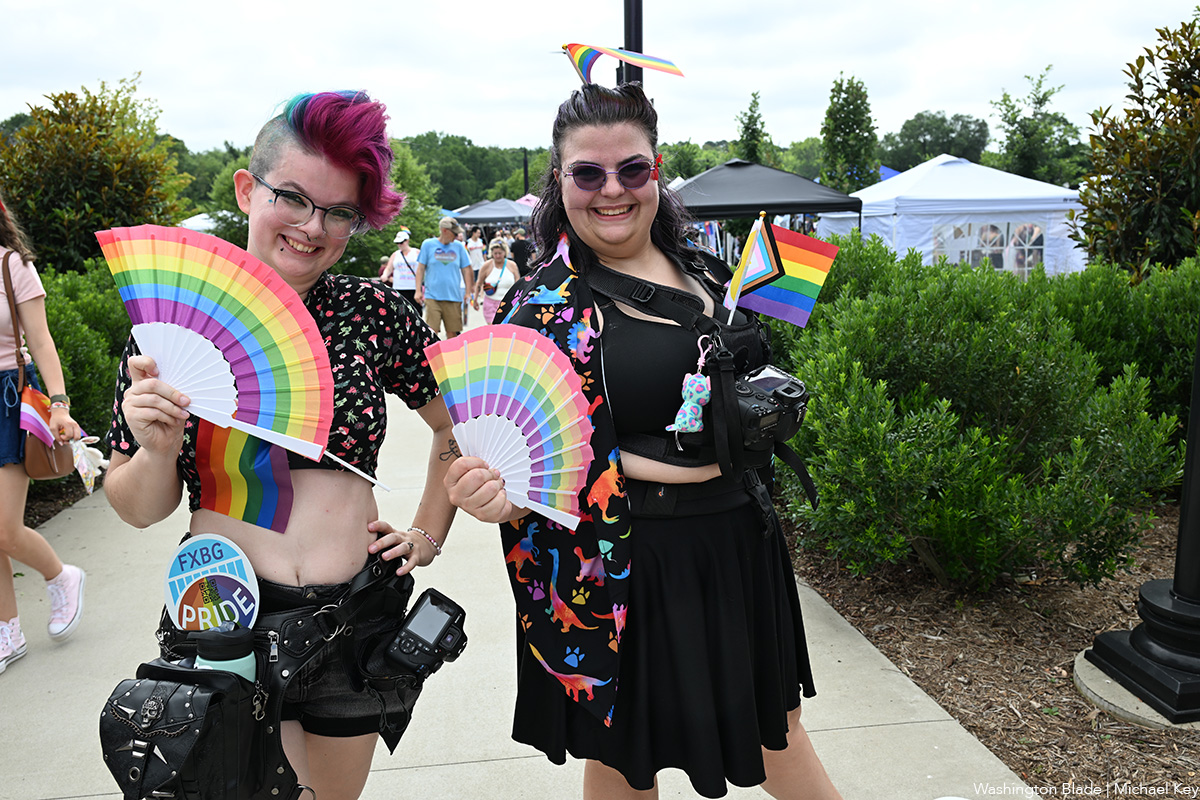
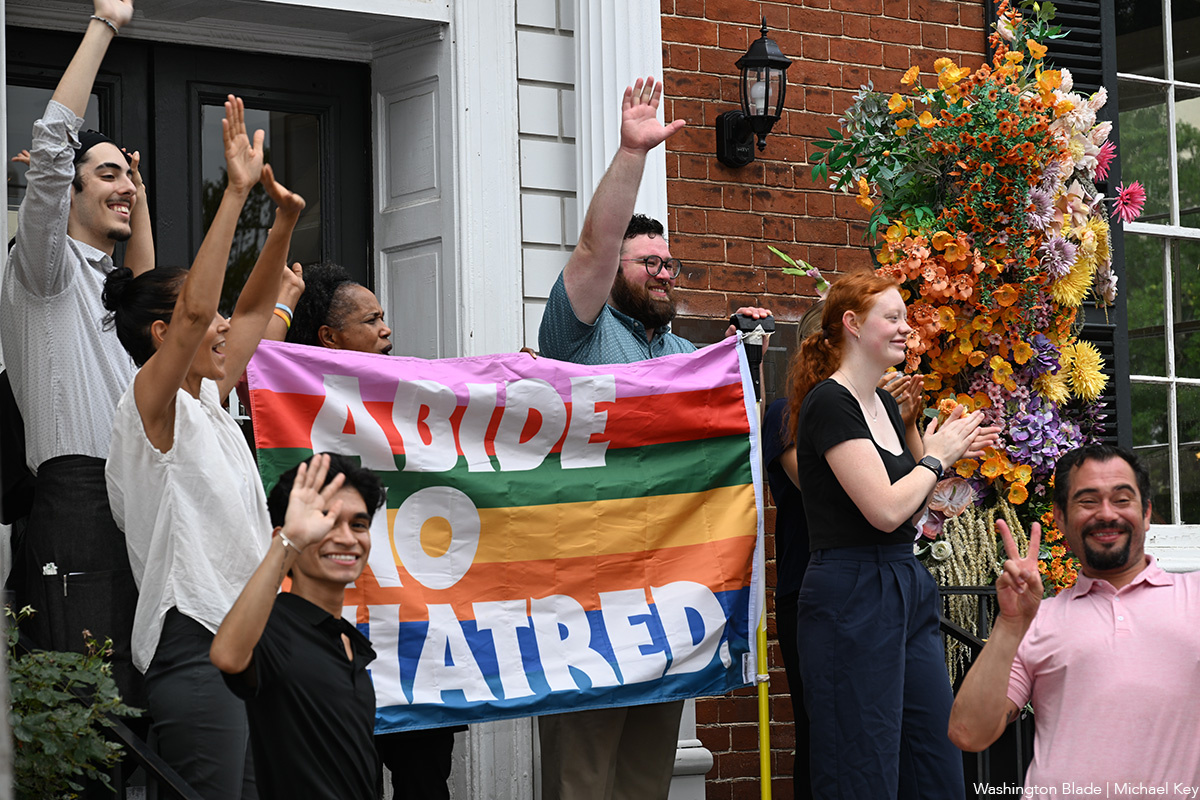
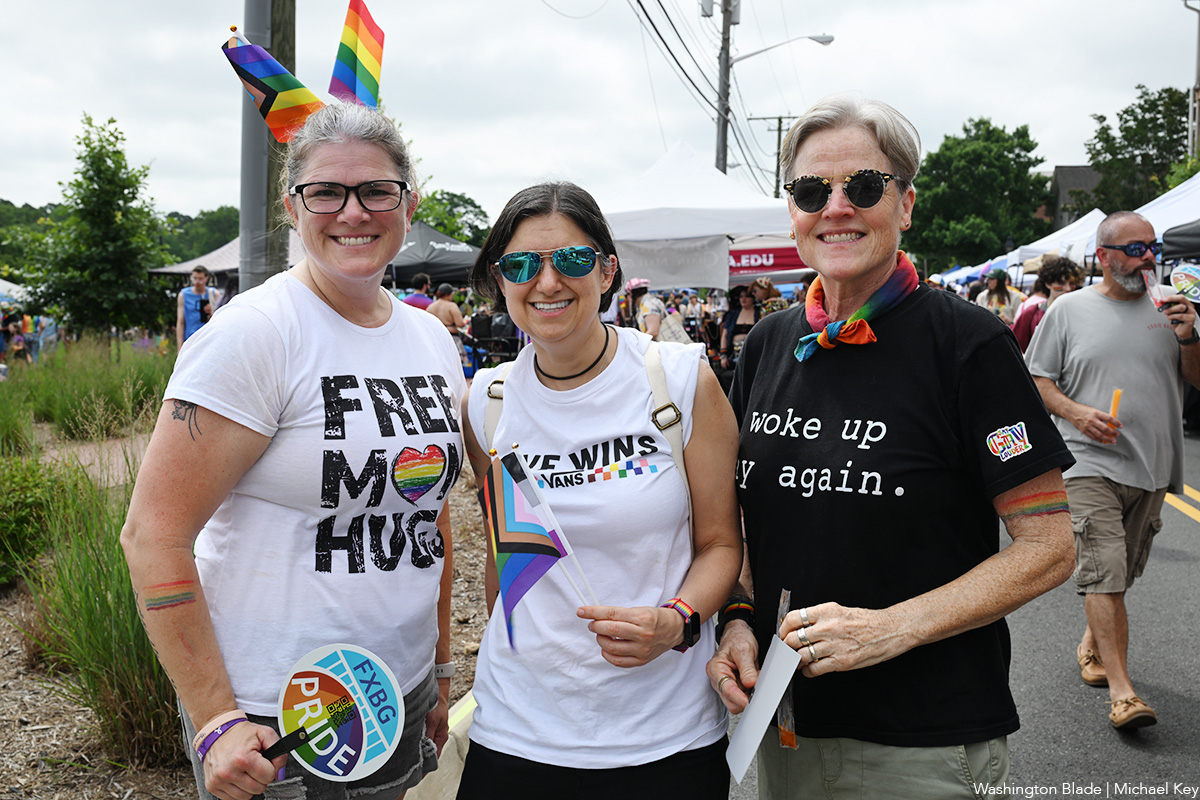

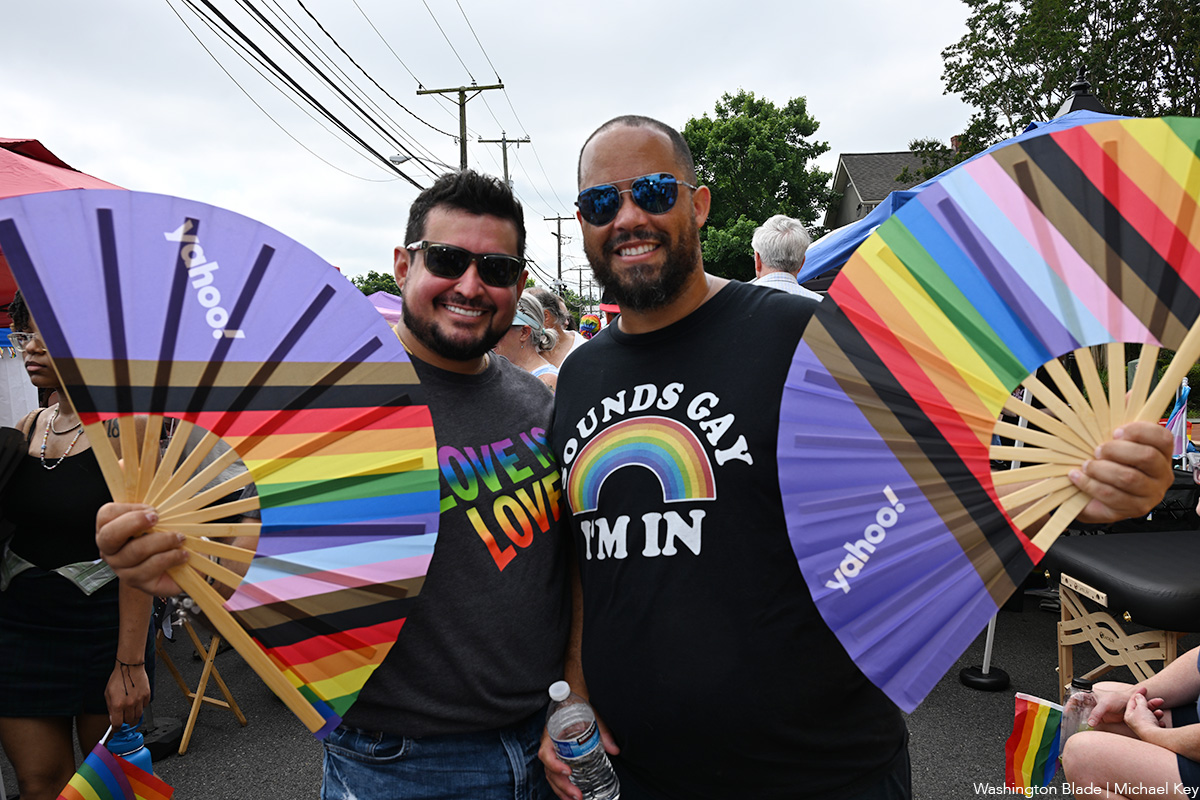
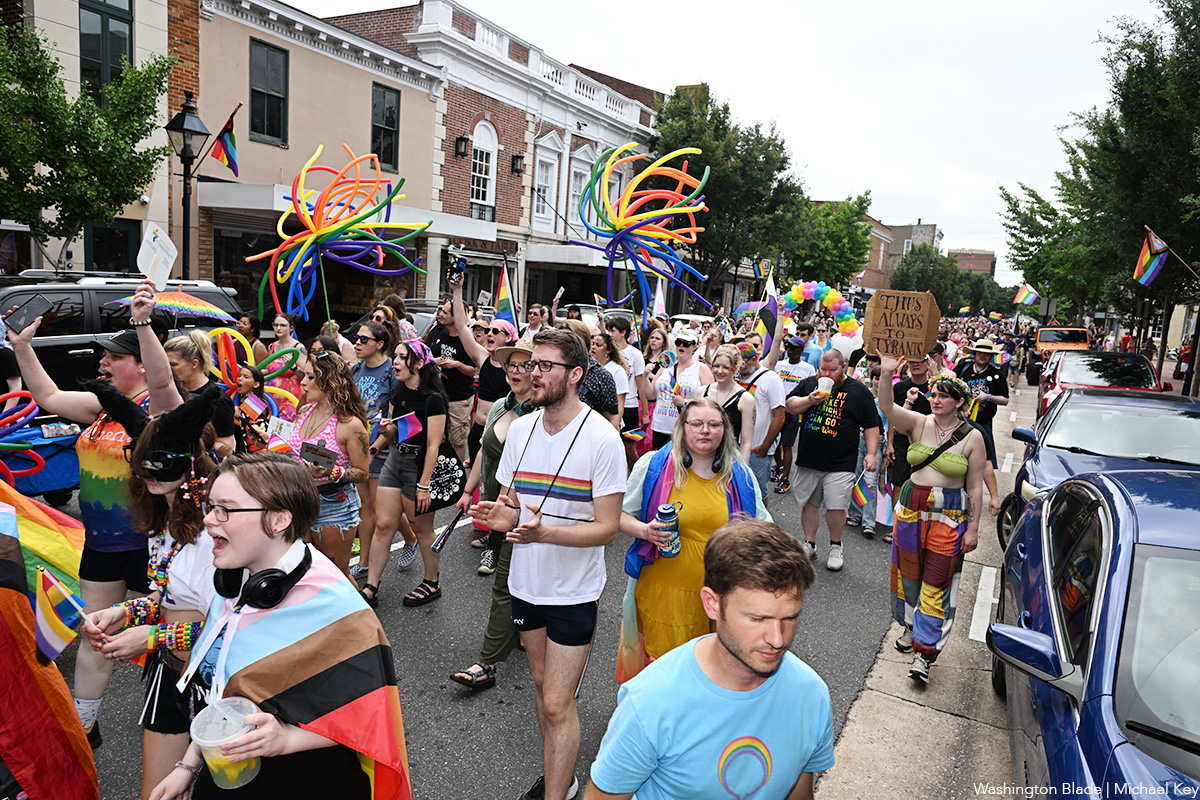

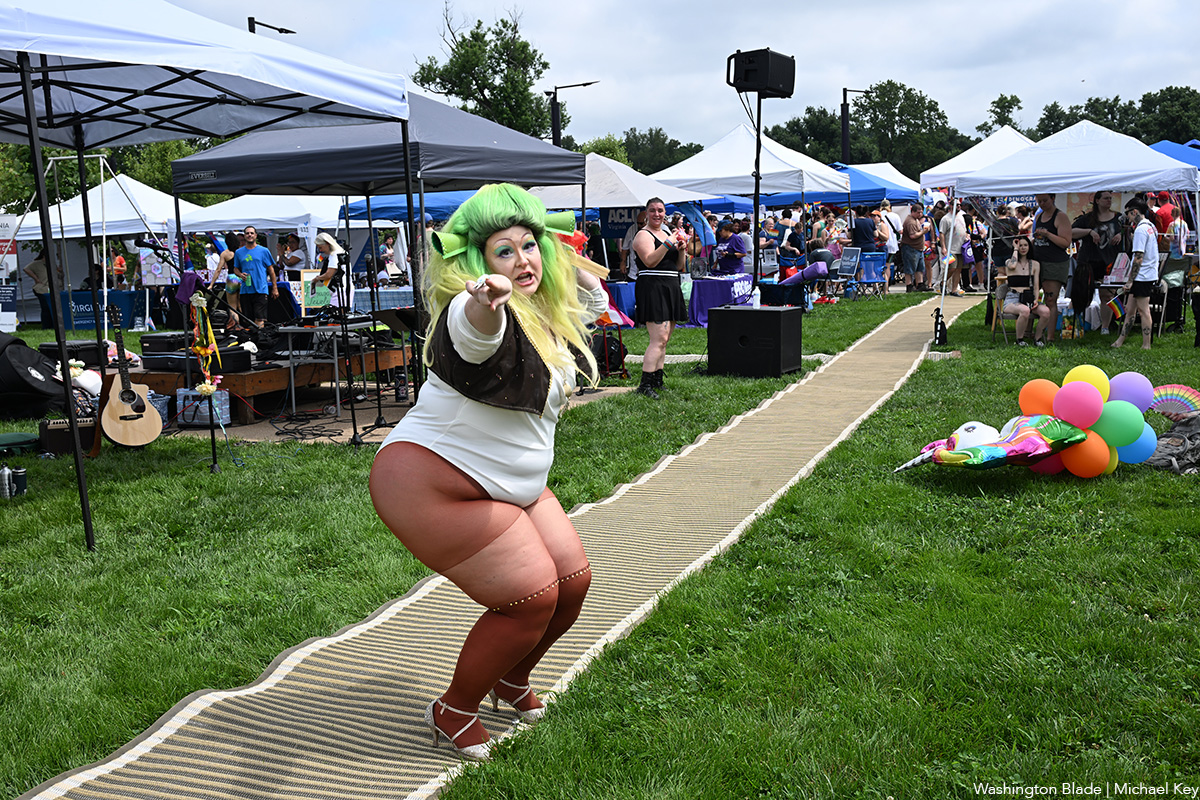
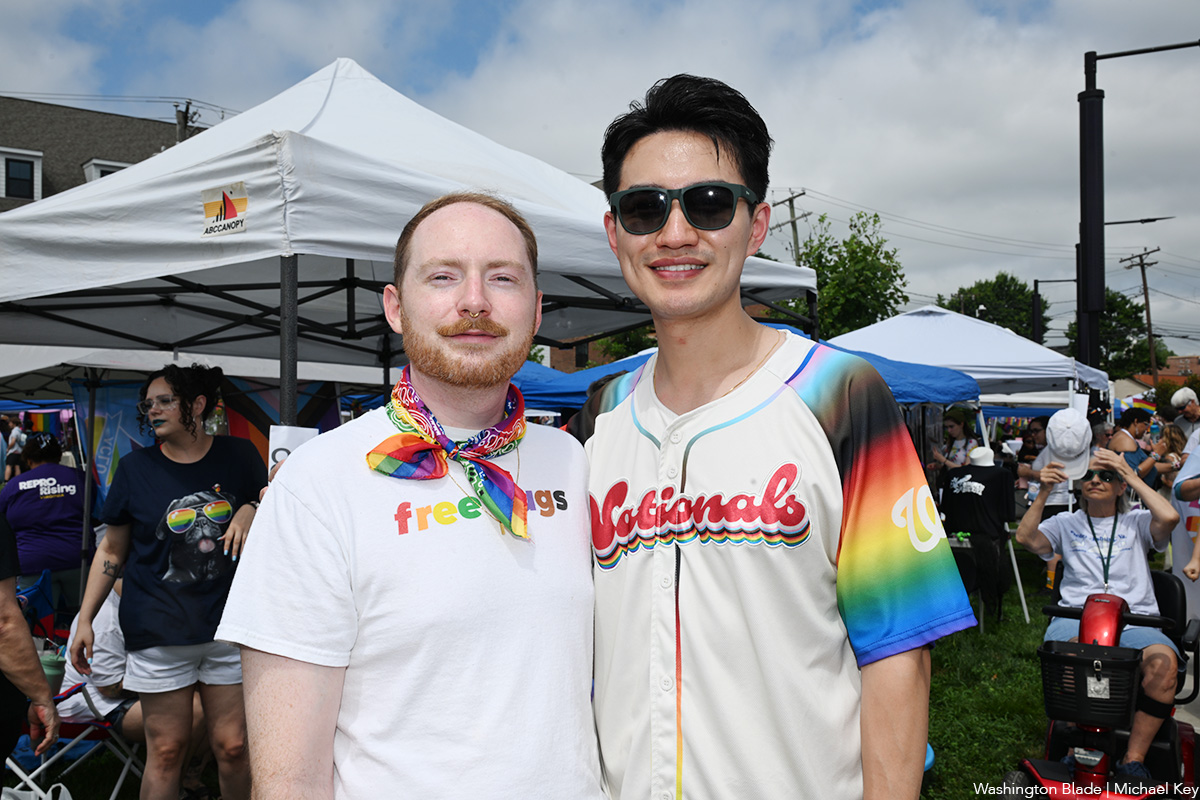

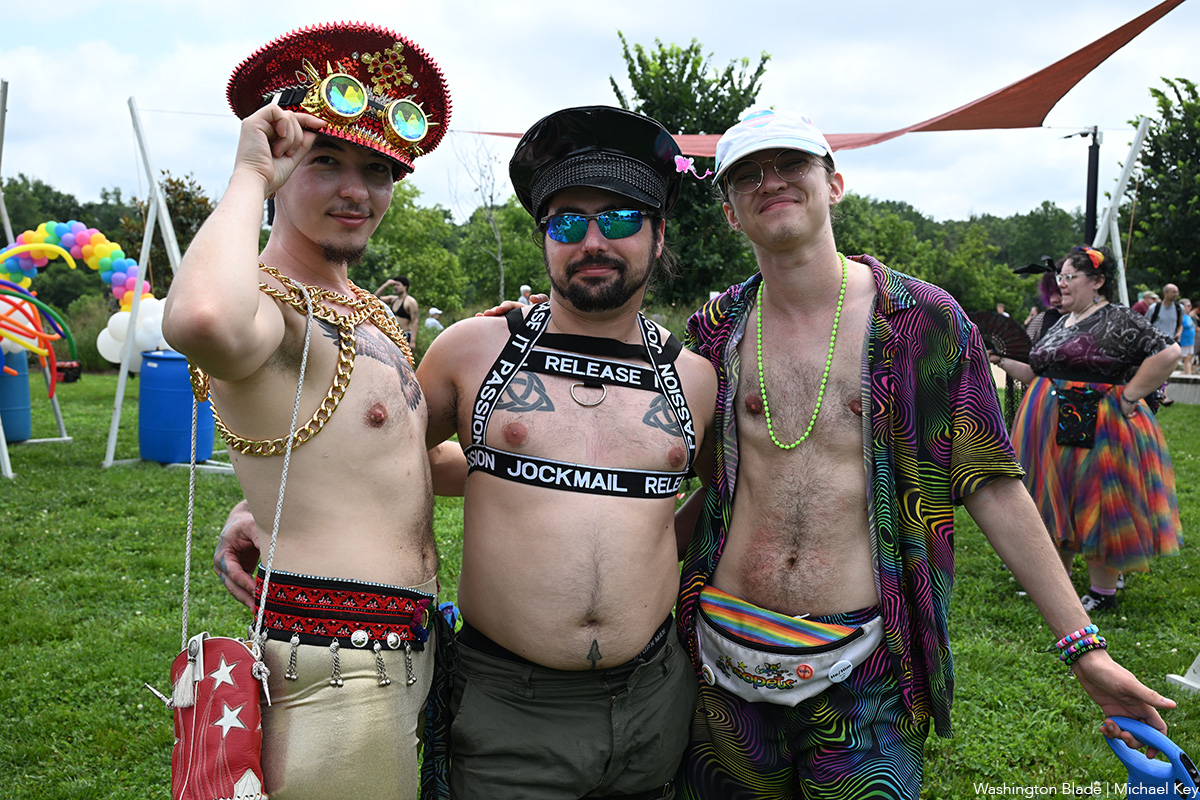

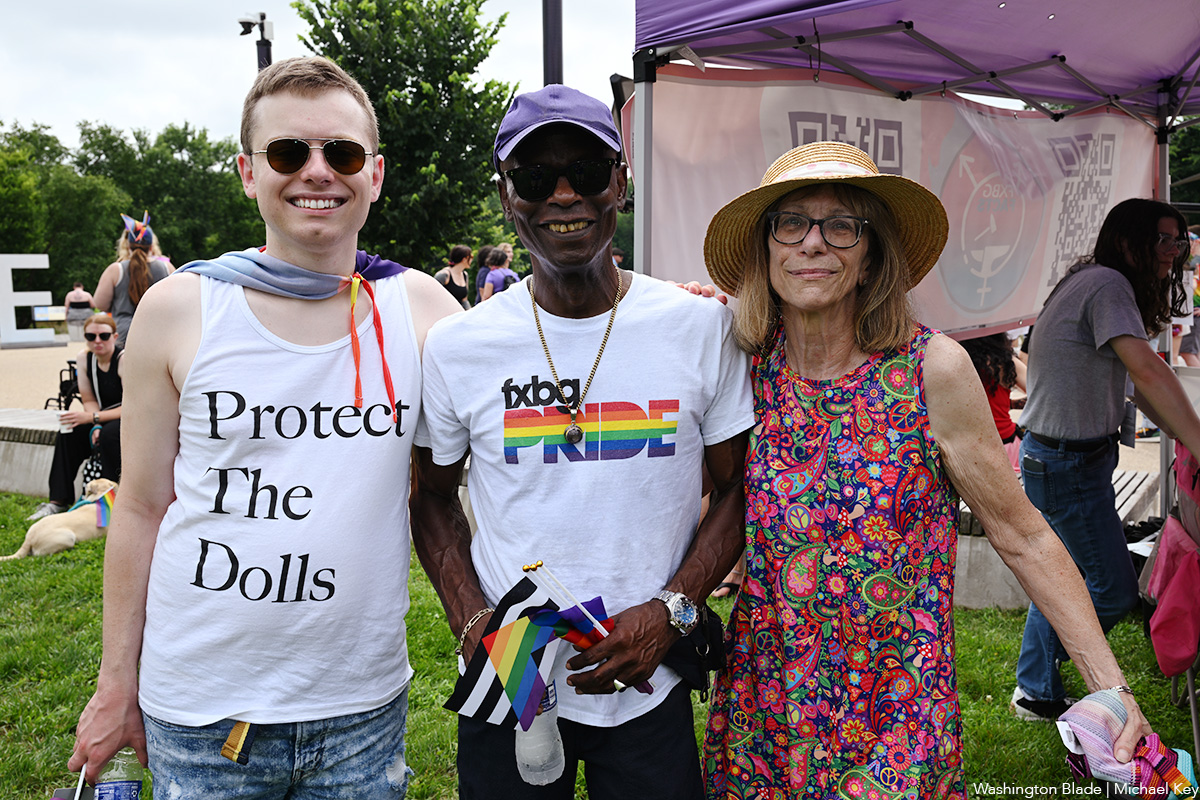


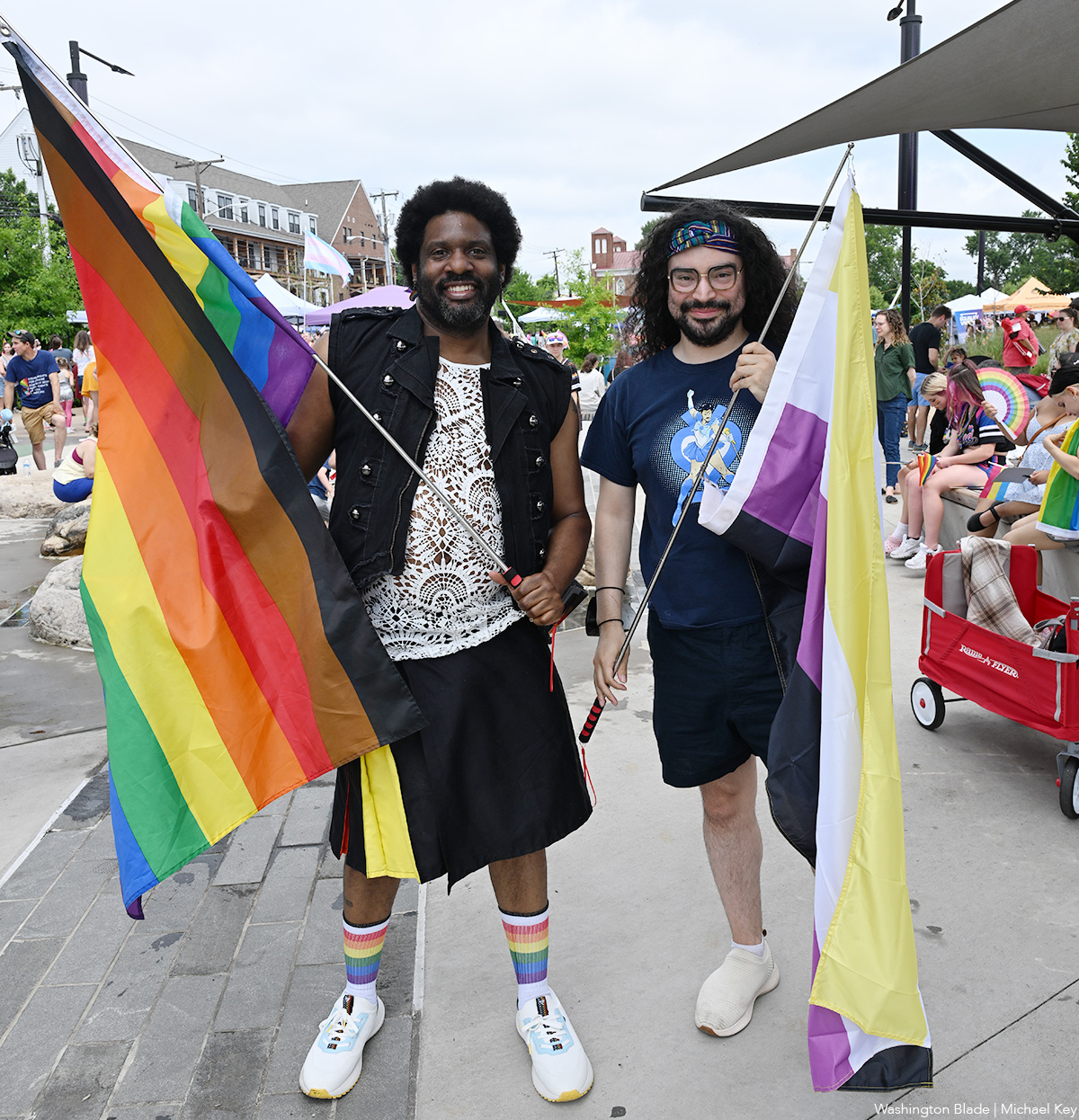

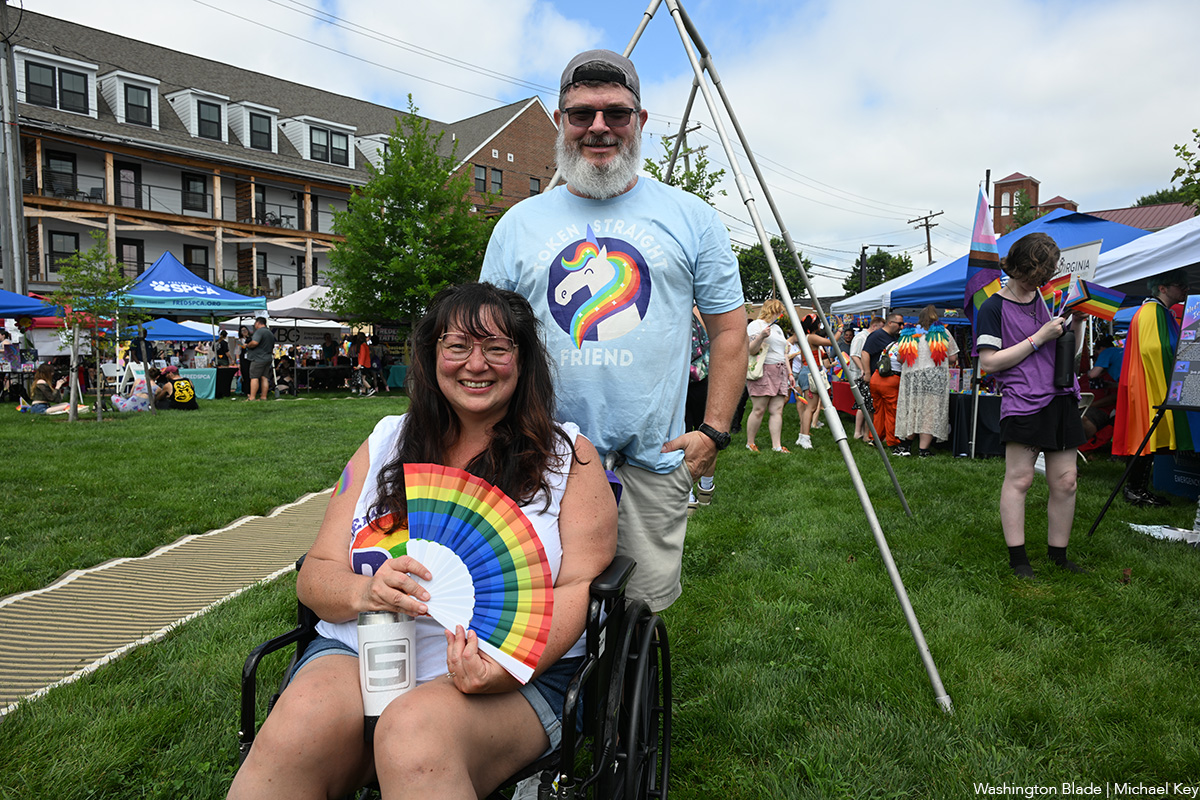
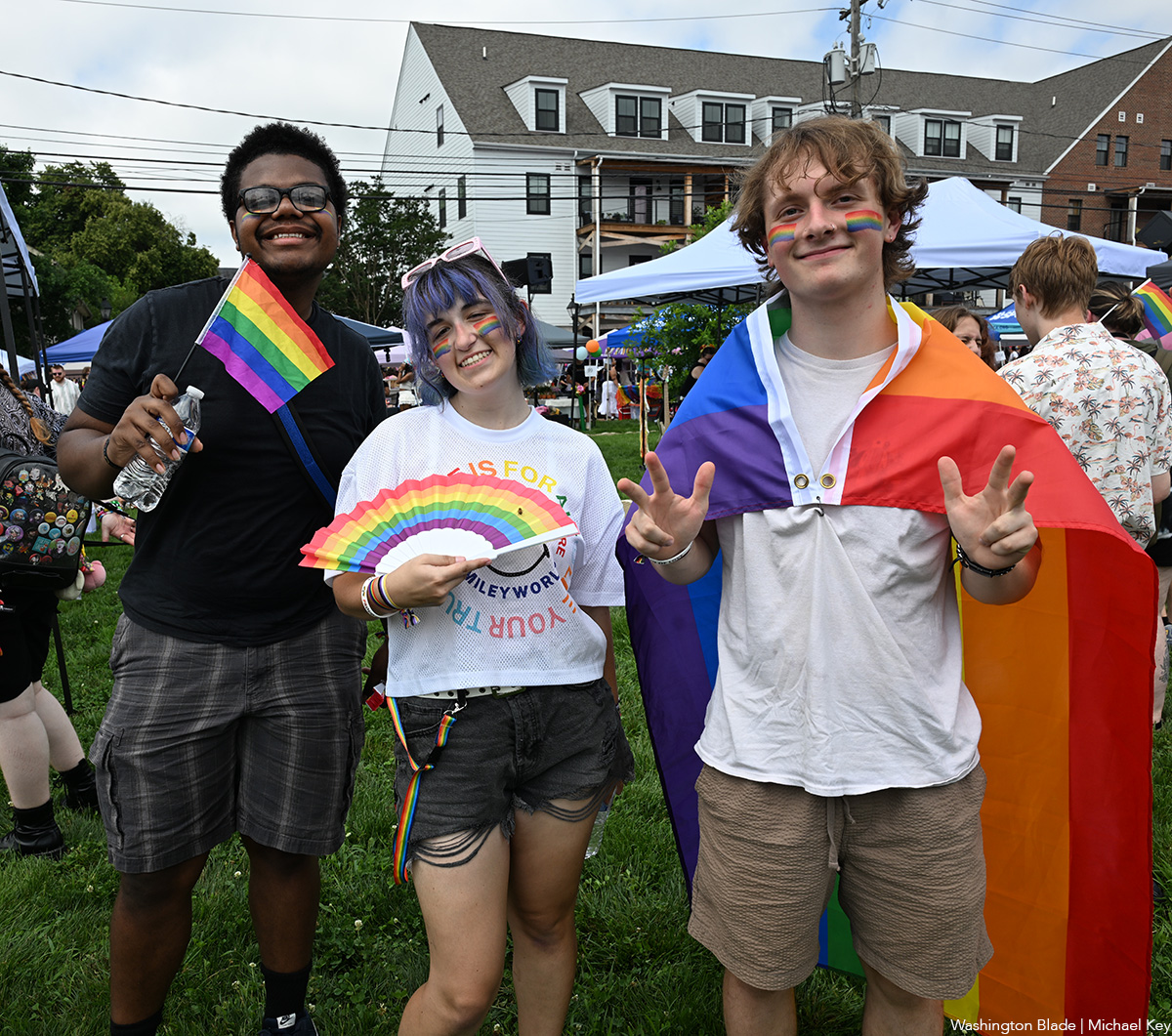
India
Anaya Bangar challenges ban on trans women in female cricket teams
Former Indian cricketer Sanjay Bangar’s daughter has received support
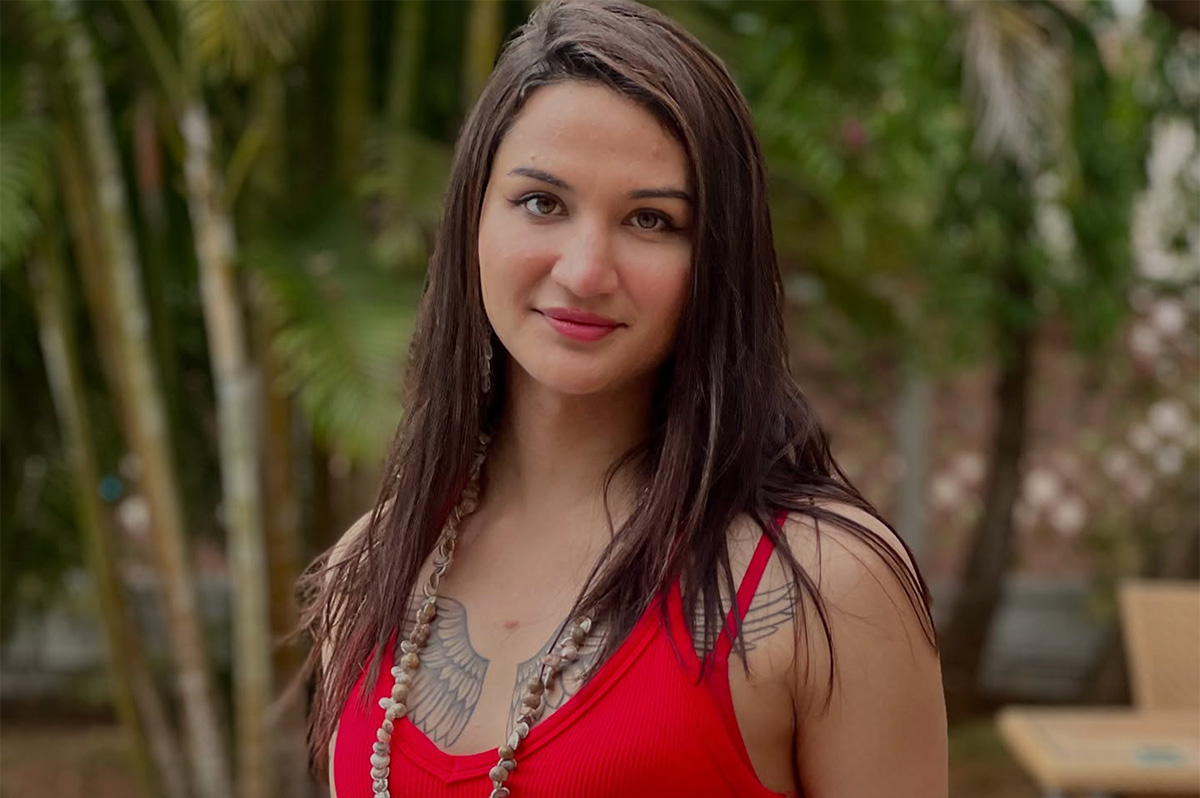
Anaya Bangar, the daughter of former Indian cricketer Sanjay Bangar, has partnered with the Manchester Metropolitan University Institute of Sport in the U.K. to assess her physiological profile following her gender-affirming surgery and undergoing hormone replacement therapy.
From January to March 2025, the 23-year-old underwent an eight-week research project that measured her glucose levels, oxygen uptake, muscle mass, strength, and endurance after extensive training.
The results, shared via Instagram, revealed her metrics align with those of cisgender female athletes, positioning her as eligible for women’s cricket under current scientific standards. Bangar’s findings challenge the International Cricket Council’s 2023 ban on transgender athletes in women’s cricket, prompting her to call for a science-based dialogue with the Board of Control for Cricket in India and the ICC to reform policies for transgender inclusion.
“I am talking with scientific evidence in my hand,” Bangar said in an interview posted to her Instagram page. “So, I hope, this makes an impact and I will be hoping to BCCI and ICC talking with me and discussing this further.”
On Nov. 21, 2023, the ICC enacted a controversial policy barring trans women from international women’s cricket. Finalized after a board meeting in Ahmedabad, India, the regulation prohibits any trans player who has experienced male puberty from competing, irrespective of gender-affirming surgery or hormone therapy. Developed through a 9-month consultation led by the ICC’s Medical Advisory Committee, the rule aims to safeguard the “integrity, safety, and fairness” of women’s cricket but has drawn criticism for excluding athletes like Canada’s Danielle McGahey, the first trans woman to play internationally. The policy, which allows domestic boards to set their own rules, is slated for review by November 2025.
Bangar shared a document on social media verifying her participation in a physiological study at the Manchester Metropolitan University Institute of Sport, conducted from Jan. 20 to March 3, 2025, focused on cricket performance. The report confirmed that her vital metrics — including haemoglobin, blood glucose, peak power, and mean power — aligned with those of cisgender female athletes. Initially, her fasting blood glucose measured 6.1 mmol/L, slightly above the typical non-diabetic range of 4.0–5.9 mmol/L, but subsequent tests showed it normalized, reinforcing the study’s findings that her physical profile meets female athletic standards.
“I am submitting this to the BCCI and ICC, with full transparency and hope,” said Bangar. “My only intention is to start a conversation based on facts not fear. To build space, not divide it.”
In a letter to the BCCI and the ICC, Bangar emphasized her test results from the Manchester Metropolitan University study. She explained that the research aimed to assess how hormone therapy had influenced her strength, stamina, haemoglobin, glucose levels, and overall performance, benchmarked directly against cisgender female athletic standards.
Bangar’s letter to the BCCI and the ICC clarified the Manchester study was not intended as a political statement but as a catalyst for a science-driven dialogue on fairness and inclusion in cricket. She emphasized the importance of prioritizing empirical data over assumptions to shape equitable policies for trans athletes in the sport.
Bangar urged the BCCI, the world’s most influential cricket authority, to initiate a formal dialogue on trans women’s inclusion in women’s cricket, rooted in medical science, performance metrics, and ethical fairness. She called for the exploration of eligibility pathways based on sport-specific criteria, such as haemoglobin thresholds, testosterone suppression timelines, and standardized performance testing. Additionally, she advocated for collaboration with experts, athletes, and legal advisors to develop policies that balance inclusivity with competitive integrity.
“I am releasing my report and story publicly not for sympathy, but for truth. Because inclusion does not mean ignoring fairness, it means measuring it, transparently and responsibly,” said Bangar in a letter to the BCCI. “I would deeply appreciate the opportunity to meet with you or a representative of the BCCI or ICC to present my findings, discuss possible policy pathways, and work towards a future where every athlete is evaluated based on real data, not outdated perceptions.”
Before her transition, Bangar competed for Islam Gymkhana in Mumbai and Hinckley Cricket Club in the U.K., showcasing her talent in domestic cricket circuits. Her father, Sanjay Bangar, was a dependable all-rounder for the Indian national cricket team from 2001 to 2004, playing 12 test matches and 15 One Day Internationals. He later served as a batting coach for the Indian team from 2014 to 2019, contributing to its strategic development.
Cricket in India is a cultural phenomenon, commanding a fanbase of more than 1 billion, with more than 80 percent of global cricket viewership originating from the country.
The International Cricket Council, the sport’s governing body, oversees 12 full member nations and more than 90 associate members, with the U.S. recently gaining associate member status in 2019 and co-hosting the 2024 ICC Men’s T20 World Cup. The BCCI generated approximately $2.25 billion in revenue in the 2023–24 financial year, primarily from the Indian Premier League, bilateral series, and ICC revenue sharing. The ICC earns over $3 billion from media rights in India alone for the 2024–27 cycle, contributing nearly 90 percent of its global media rights revenue, with the BCCI receiving 38.5 percent of the ICC’s annual earnings, approximately $231 million per year.
Women’s cricket in India enjoys a growing fanbase, with over 300 million viewers for the Women’s Premier League in 2024, making it a significant driver of the sport’s global popularity. The International Cricket Council oversees women’s cricket in 12 full member nations and over 90 associate members, with the U.S. fielding a women’s team since gaining associate status in 2019 and competing in ICC events like the 2024 Women’s T20 World Cup qualifiers. The BCCI invests heavily in women’s cricket, allocating approximately $60 million annually to the WPL and domestic programs in 2024–25, while contributing to the ICC’s $20 million budget for women’s cricket development globally. India’s media market for women’s cricket, including WPL broadcasting rights, generated $120 million in 2024, accounting for over 50 percent of the ICC’s women’s cricket media revenue.
“As a woman, I feel when someone says that they are women, then they are, be trans or cis. A trans woman is definitely the same as a cis woman emotionally and in vitals, and specially, when someone is on hormone replacement therapy. Stopping Anaya Bangar from playing is discrimination and violation of her rights. It is really sad and painful that every transwoman need to fight and prove their identity everywhere,” said Indrani Chakraborty, an LGBTQ rights activist and a mother of a trans woman. “If ICC and BCCI is stopping her from playing for being transgender, then I will say this to be their lack of awareness and of course the social mindsets which deny acceptance.”
Chakraborty told the Blade that Bangar is an asset, no matter what. She said that the women’s cricket team will only benefit by participation, but the discriminating policies are the hindrance.
“Actually the transgender community face such discrimination in every sphere. In spite of being potent, they face rejection. This is highly inhuman. These attitudes is regressive and will never let to prosper. Are we really in 2025?,” said Chakraborty. “We, our mindset and the society are the issues. We, as a whole, need to get aware and have to come together for getting justice for Anaya. If today, we remain silent, the entire community will be oppressed. Proper knowledge of gender issues need to be understood.”
The BCCI and the International Cricket Council have not responded to the Blade’s repeated requests for comment.
Theater
‘Andy Warhol in Iran’ a charming look at intersection of art, politics
Mosaic production plumbs kidnapping plot of iconic artist for humor
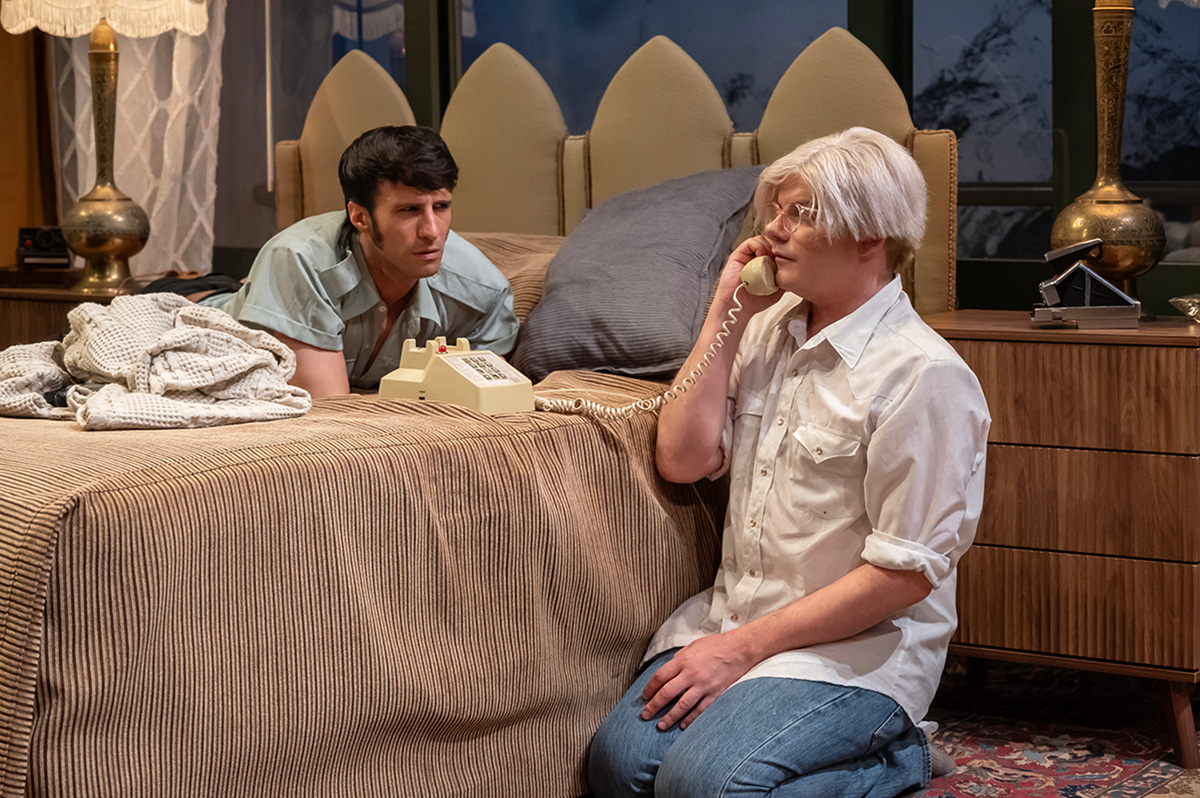
‘Andy Warhol in Iran’
Through July 6
Mosaic Theater Company at Atlas Performing Arts Center
1333 H St., N.E., WDC
$70
Mosaictheater.org
Behind the blasé veneer, Andy Warhol was more curious than people knew. Particularly when it came to money. He kept a close eye on how the ultra-rich lived, what fellow artists were being paid and who was paying them, and, of course, all the new and more saleable ways of making and selling art.
In playwright Brent Askari’s “Andy Warhol in Iran,” now playing at Mosaic Theater Company, Warhol (Alex Mills) is brought outside of his usual area of interest when he lands face to face with a young revolutionary. While Warhol could be artistically revolutionary, he didn’t connect with the idea of forgoing the pursuit of money and fame for the infinitely more difficult task of achieving social justice.
The 90-minute play is not fully factual, but rather inspired by Warhol’s real life 1976 trip to Tehran to make portraits of the royal Pahlavi family in the waning days of their reign, with a focus on Farah Diba, the Shah’s elegant wife and Iran’s last empress.
The action unfolds in a Tehran hotel suite boasting a glorious view of the snowcapped Alborz Mountains not far from Iran’s vibrant and bustling capital. It’s here, disguised as room service, that Farhad (played by Nathan Mohebbi) gains entrance to Warhol’s rooms, seeking to kidnap the pop art star to garner attention for the university students’ movement.
Warhol meets the armed intruder with a sort of wide-eyed wonderment, flummoxed why he has been selected for abduction. Warhol can’t understand why a young man like Farhad wouldn’t prefer to be paid a big ransom on the spot, or be cast as a star in one of the Warhol Factory flicks.
When Farhad replies it’s because Warhol is the most decadent artist in the world, Warhol mistakenly takes it for the ultimate compliment. After all, his biggest successes had been connected to celebrity and consumerism (think Campbell’s Soup Cans. 1962).
For Warhol, decadence is aspirational. He made portraits of financiers, movie stars, and jet setters. In fact, he’d been obsessed with the lives of the rich and famous since he was a small kid in Pittsburgh thumbing through Photoplay Magazine while bed bound with Saint Vitus Dance.
Accompanying Warhol to Tehran (unseen) are his business manager Fred Hughes, and Bob Colacello, editor of Interview magazine. Together, they make a merry trio of gay social climbers. These kinds of trips were a boon to the artist. Not only did they solidify a new strata of high society contacts, but were also superbly lucrative, thickly padding the painter’s pockets.
While in Iran, Warhol wanted only to view Farah’s vast world-class collection of jewels, sample the caviar on tap, and get his Polaroids. Then he’d fly first class back to New York and transfer the images to silk screen and sell the portraits to the Persian royals at a hefty price. He didn’t foresee any obstacles along the way.
Serge Seiden’s direction is spot on. He’s rendered a wonderfully even two-hander with a pair of terrifically cast actors. And Seiden plumbs the piece for humor mostly drawn from the absurdity of the situation without missing any of the serious bits.
As Warhol, out actor Mills is instantly recognizable as the eccentric artist. He’s wearing the button-down shirt, jeans, blazer, glasses, and, of course the famed shock of white hair wig (here a little more Karen than Andy). His portrayal is better than an imitation. He gives a bit of the fey and confused, but has also infuses him with a certain dynamism.
The energy works well with the intensity of Mohebbi’s would-be kidnapper Farhad. And while it isn’t a romance, it’s not impossible to think that Warhol might fall for a handsome male captor.
The connection between art and politics is almost always interesting; and though not a super deep dive into the era or the life of an artist, “Andy Warhol in Iran” is a compelling, charming, and sometimes funny glimpse into that intersection.
-

 U.S. Supreme Court4 days ago
U.S. Supreme Court4 days agoSupreme Court upholds ACA rule that makes PrEP, other preventative care free
-

 U.S. Supreme Court4 days ago
U.S. Supreme Court4 days agoSupreme Court rules parents must have option to opt children out of LGBTQ-specific lessons
-

 Congress5 days ago
Congress5 days agoSenate parliamentarian orders removal of gender-affirming care ban from GOP reconciliation bill
-

 District of Columbia5 days ago
District of Columbia5 days agoMan sentenced to 15 years in prison for drug deal that killed two DC gay men



